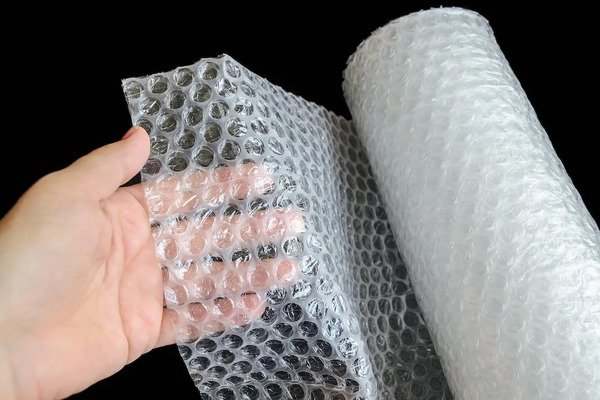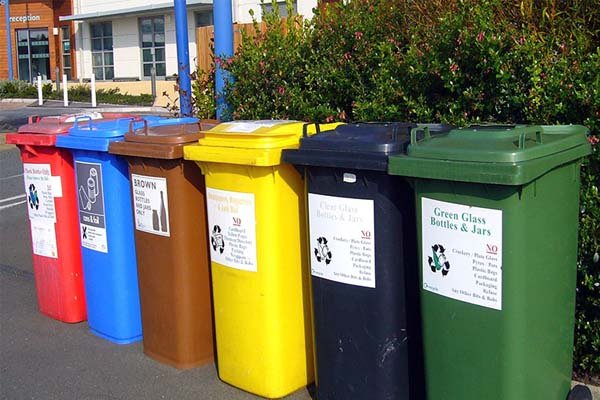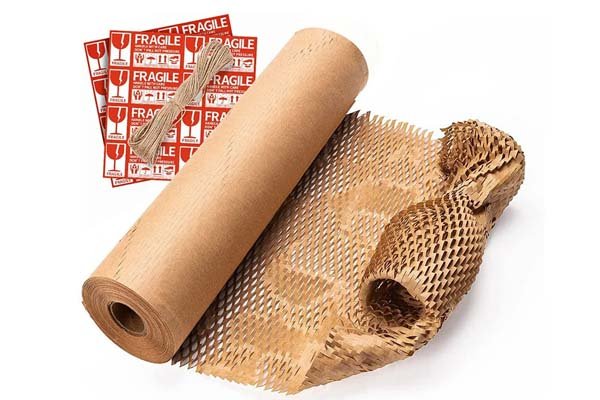
Bubble wrap, while recyclable, cannot be placed in standard curbside recycling bins. It is made from #4 low-density polyethylene (LDPE)1, a type of plastic film that requires separate handling. Proper recycling involves taking it to designated store drop-off locations that accept plastic films.
Recycling centers, known as Municipal Recycling Facilities (MRFs)2, are built to process rigid materials like bottles and boxes. Flexible plastics like bubble wrap can jam sorting equipment by wrapping around gears and screens, causing delays and equipment shutdowns. To avoid this, bubble wrap must be collected and processed separately.
How to Prepare Bubble Wrap for Recycling
- Check for the #4 LDPE recycling symbol on the wrap.
- Ensure it is clean and dry. Remove all labels, tape, and other materials.
- Pop the bubbles to reduce volume.
- Bundle it with other plastic films (such as grocery bags) and drop it off at a designated store recycling bin.
Can Bubble Wrap Go in the Curbside Recycling Bin?

No, bubble wrap should not be placed in home recycling bins. It is classified as a "tangler" due to its tendency to clog sorting machines at recycling centers. Instead, take it to a retail drop-off bin designated for plastic films.
Why Flexible Plastics Cause Problems in Recycling Facilities
MRFs use automated equipment with rotating screens to sort materials. These machines are designed for heavier, rigid objects. Thin plastic films like bubble wrap can become entangled in the equipment, similar to how hair wraps around a vacuum cleaner brush. This contamination requires workers to stop operations and manually remove the plastic, which is inefficient and hazardous.
What Happens When Bubble Wrap Is Recycled Properly?
Correctly recycled bubble wrap goes through a specialized process:
- Collection: Plastic films are gathered from retail drop-off bins.
- Transportation: Materials are delivered to facilities equipped for film plastic.
- Processing: The films are cleaned, shredded, and melted into plastic pellets.
- Manufacturing: These pellets are used to produce new items.
Common Products Made from Recycled Bubble Wrap
| Product Category | Examples |
|---|---|
| Composite Lumber | Decking, benches, fencing, railings |
| New Plastic Bags | Trash liners, shipping envelopes |
| Film and Sheeting | Furniture wrap, construction sheeting |
| Industrial Parts | Crates, pallets, piping |
Challenges in Recycling Plastic Film
Despite being recyclable, film plastic poses difficulties. The primary issue is contamination—dirty or incorrect materials in drop-off bins can render entire batches unusable. Market fluctuations in the value of recycled plastic also impact the economic viability of these programs. To ensure success, it is crucial to provide clean, uncontaminated material.
What to Do with Dirty or Taped Bubble Wrap
If bubble wrap is dirty, greasy, or has too much tape or labels that can’t be removed, it should be discarded in the trash. Contaminated material can compromise the quality of recycled batches.
What Counts as Contamination?
- Food and Liquids: Residue can lead to mold and degrade the plastic.
- Adhesives: Tape and label glue melt at different temperatures, creating defects in the recycled product.
- Mixed Materials: Paper or other non-film items disrupt the recycling stream.
Recycle or Trash? A Simple Reference
| Condition of Bubble Wrap | Action | Reason |
|---|---|---|
| Clean, dry, no tape/labels | Recycle | Suitable for plastic film recycling. |
| Dirty with food or grease | Trash | Contaminants make recycling ineffective. |
| Covered in non-removable tape or labels | Trash | Adhesives interfere with plastic processing. |
| Bubble mailer with mixed materials | Trash | Cannot be separated for recycling. |
When in Doubt, Throw It Out
Placing uncertain materials in recycling bins—known as "wish-cycling"—can do more harm than good. It’s better to discard questionable items than risk contaminating recyclable material.
Eco-Friendly Alternatives to Bubble Wrap

While recycling bubble wrap helps, using alternatives can reduce plastic waste even further. Options include paper-based and biodegradable materials3 tailored for different shipping needs.
Paper-Based Alternatives
- Honeycomb Wrap: Stretchable kraft paper forming a 3D structure; recyclable and compostable.
- Corrugated Bubble Wrap: Uses cardboard’s wavy texture for cushioning; recyclable with paper.
- Shredded/Crinkled Paper: Effective for filling space; often made from recycled sources.
Biodegradable and Compostable Materials
- Cornstarch Packing Peanuts: Plant-based, dissolves in water, ideal for loose fill.
- Mushroom Packaging: Made from mycelium and agricultural waste, compostable in home gardens.
- Recycled Air Pillows: Inflated on-site, often made from recycled LDPE; recyclable via store drop-off.
Comparison of Alternatives
| Alternative | Material | End-of-Life Option | Best For |
|---|---|---|---|
| Honeycomb Wrap | Kraft Paper | Recyclable, Compostable | Wrapping fragile items (glass, ceramics) |
| Mushroom Packaging | Mycelium, Hemp Waste | Home Compostable | Custom-fit protection for electronics |
| Cornstarch Peanuts | Plant-Based Starch | Biodegradable, Dissolves in Water | Void fill and cushioning for small items |
| Recycled Air Pillows | Recycled LDPE (#4 Plastic) | Store Drop-off (deflated) | Lightweight packaging for blocking and bracing |
Conclusion
Bubble wrap can be recycled, but only through the proper channels. Do not place it in your curbside bin. Instead, ensure it’s clean and dry, remove any attachments, and bring it to a retail drop-off for plastic films. Taking these steps helps maintain the integrity of recycling systems and supports a more sustainable materials economy.






